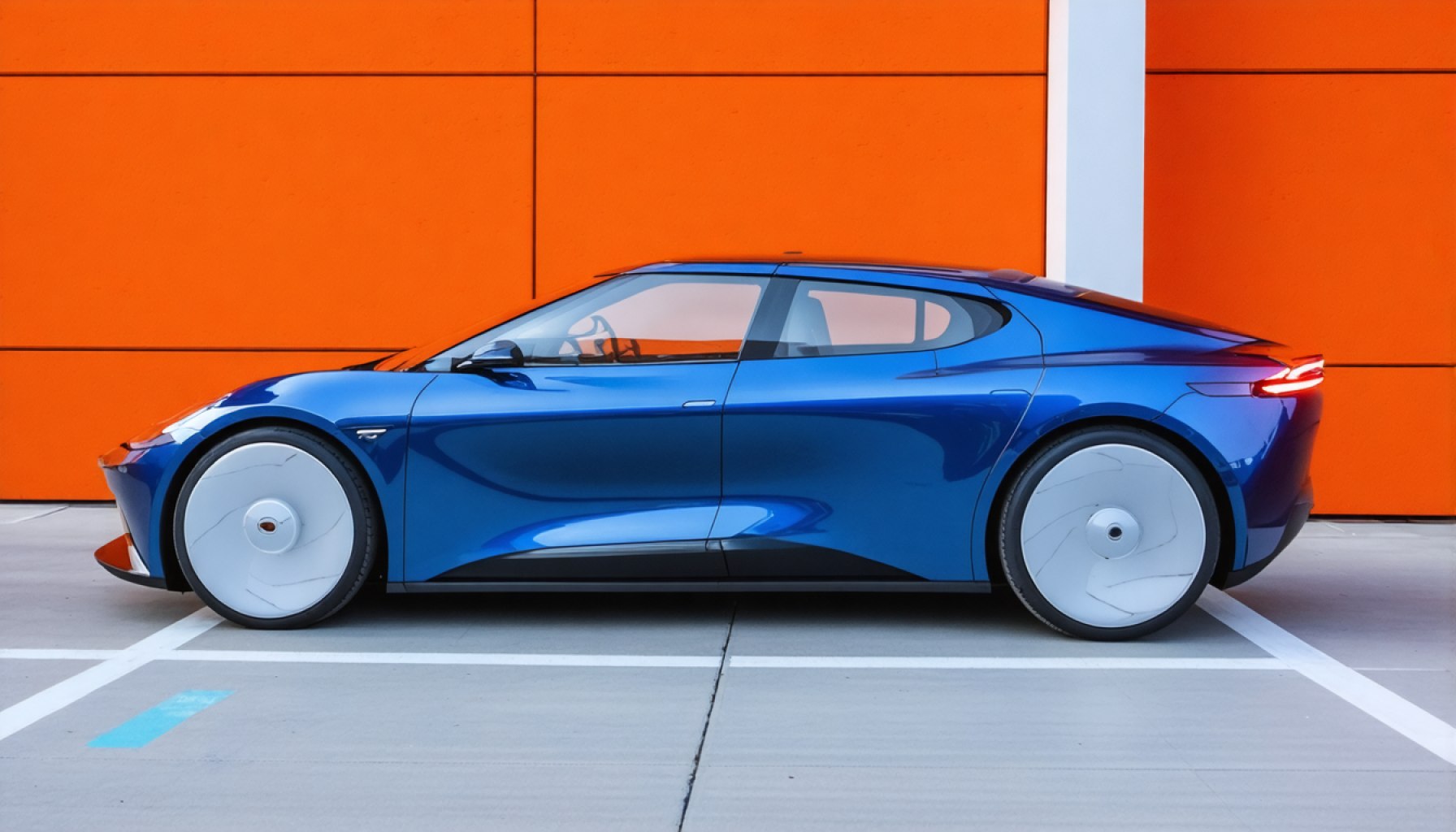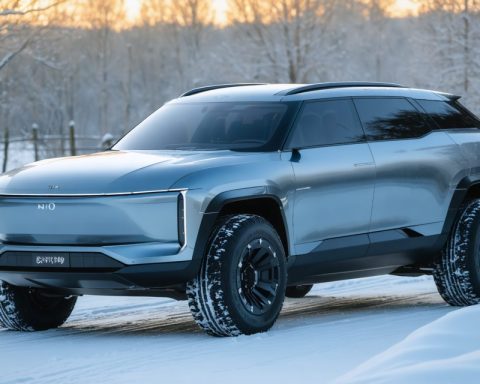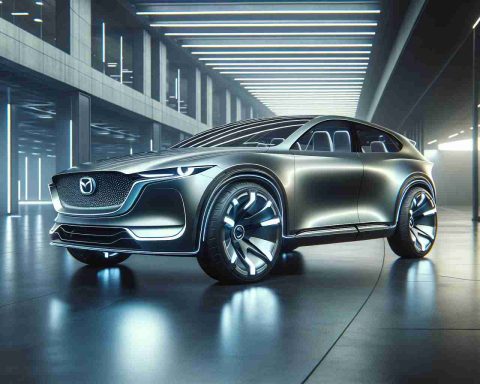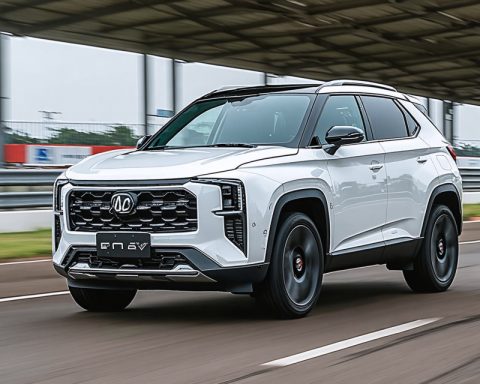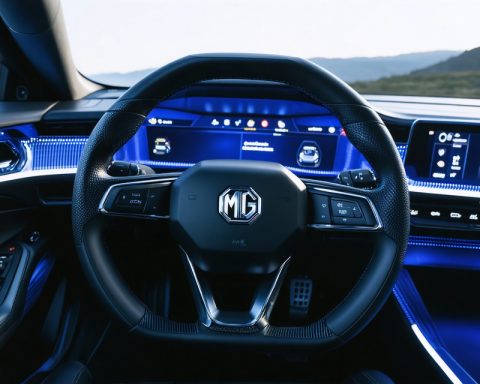- Ford is considering incorporating simulated manual gear shifters in its electric vehicles to enhance driver engagement, despite the declining popularity of manual transmissions in the U.S.
- A recent patent highlights Ford’s innovative design, which mimics the tactile feedback of a stick shift without changing gears, focusing on driver experience over traditional functionality.
- In the U.S., only 1% of cars sold have manual transmissions, contrasting sharply with European markets where 80% of sales involve manual gearboxes.
- Ford is not alone in this approach; Hyundai and Toyota are also experimenting with fake shifting features in their EVs to emulate manual driving experiences.
- This trend reflects a shift in automotive design toward blending technological advancement with the joy of driving, prioritizing sensation and artistry.
A subtle rumble of nostalgia awakens as Ford explores the possibility of adding simulated manual gear shifters to its future electric vehicle lineup. Despite the reality that only a scant 18% of Americans can navigate the ins and outs of a stick shift, this bold move aims to inject the thrill and tactile satisfaction of driving into the serene, high-tech world of electric cars.
In remarkable detail, a recent patent filing unveils Ford’s plan to bridge this yawning gap in driver engagement. The design boasts a mock-up of a traditional stick shift, cunningly engineered not to alter gears but to simulate the visceral feedback and interaction that gearheads crave. If this innovation reaches production lines, drivers could feel once again the subtle vibrations of a manual transmission — all while digitally managing power flow between a car’s battery and motor, offering no actual gear changes but a sensory smokescreen.
This flirtation with old-school mechanics comes in stark contrast to the reality where only 1% of cars sold in the U.S. tout manual transmissions, a vestige overshadowed by the rapid shift towards automatic everything. Contrast this with the European markets, where a manual gearbox still reigns in approximately 80% of sales, reflecting a cultural fascination with the artistry of driving.
Ford’s ingenious gimmick isn’t an isolated case. Hyundai’s avant-garde Ioniq 5 N has already been strutting its stuff with a “fake EV shifting” feature, deftly simulating the machinations of a manual transmission. Meanwhile, Toyota is not lagging far behind, engineering its Lexus RZ to evoke the enticing illusion of an eight-speed stick for its midsize SUV, blurring lines between modern efficiency and vintage relish.
These developments underscore a fundamental change in the expectations of auto design. As consumers crave more than silent speed and seamless accelerations, carmakers must now entwine technological sophistication with an artist’s touch in crafting the driving experience. In prioritizing sensation over utility, Ford and its rivals remind us that driving is not just a utility, but an artful dance of man and machine.
As engineers dream up ever-new ways to lure drivers back into the driver’s seat with reinvigorated enthusiasm, the question emerges: Could these nostalgic nods be the vital link in reigniting a centuries-old romance between human and car? The road ahead may be largely electric, but it seems destined to wind through a landscape where tradition finds a new lease on life.
Ford’s Nostalgic Tech: Revolutionizing the Electric Driving Experience with Simulated Gear Shifting
Introduction
The automotive industry is on the brink of a tactile revolution as Ford seeks to blend nostalgia with the high-tech future of electric vehicles (EVs). By introducing simulated manual gear shifters, Ford aims to rekindle the tangible driving joy that traditional manual transmissions once provided. This approach is crucial as the majority of new cars, particularly in the U.S., have moved away from manual transmissions. This evolution raises pertinent questions about the future of driving engagement, the potential of automotive design to evoke emotion, and the overall market implications.
Key Facts and Trends
– Market Trends: In the U.S., manual transmission vehicles account for merely 1% of new car sales, while their prevalence in Europe reaches approximately 80%. This reflects a stark contrast in driving culture and consumer preference.
– Innovation in EVs: Ford’s patented design for a simulated manual gear shifter seeks to enhance driver engagement in EVs by mimicking the tactile feedback of shifting gears. However, the innovation does not involve actual gear changes; instead, it manipulates digital signals to simulate the manual experience.
– Similar Industry Developments: Automakers like Hyundai and Toyota are joining the simulated gear shift movement. The Hyundai Ioniq 5 N and Lexus RZ offer similar features, reflecting a growing trend among major manufacturers to incorporate nostalgic design elements aimed at enhancing the driving experience.
Pros and Cons
Pros
– Enhanced Driver Engagement: Provides a satisfying, interactive experience for drivers who miss the sensation of manual driving.
– Appeal to Traditionalists: Attracts traditionalists and car enthusiasts drawn to the tactile elements of driving.
– Market Differentiation: Sets Ford apart in the competitive EV market by adding a unique, nostalgic feature.
Cons
– Complexity for New Drivers: Can confuse drivers unfamiliar with traditional manual transmissions.
– Lacks Functional Benefit: Simulated shifters do not offer actual performance enhancements compared to genuine gear changes.
How to Experience Simulated Manual Driving
1. Engage the Feature: Once installed in an EV, activate the simulated manual shifter via the vehicle’s settings.
2. Practice the Motions: Get accustomed to shifting motions without worrying about clutch release or engine stalls.
3. Enjoy the Ride: Experience the nostalgia of a manual transmission, focusing on the sensory feedback without mechanical consequences.
Industry Outlook and Predictions
– Consumer Adoption: As more manufacturers adopt simulated shifters, consumer interest in engaging driving experiences is likely to grow.
– Enhanced EV Appeal: These features may accelerate EV adoption by appealing to diverse consumer segments, including traditionalists.
– Technological Advancements: Look for increased integration of haptic feedback and adaptive technology in future iterations, enhancing realism.
Controversies and Limitations
– Purist Debate: Enthusiasts may argue over the authenticity of simulated vs. real manual driving experiences.
– Environmental Concerns: Critics may question whether resources might be better allocated towards other sustainable automotive innovations.
Conclusion and Recommendations
To take advantage of these innovations:
– Stay Informed: Follow updates from major automakers regarding simulated shift technologies.
– Experience First-Hand: Visit car dealerships offering these features to better understand the experience and benefits.
– Balance Nostalgia and Innovation: Consider how these features affect your driving satisfaction and vehicle choice.
The blending of nostalgic automotive design with modern technology could very well bridge the gap between tradition and innovation, bringing a dynamic driving experience to the future of EVs.
For more industry insights, visit Ford’s main website.
